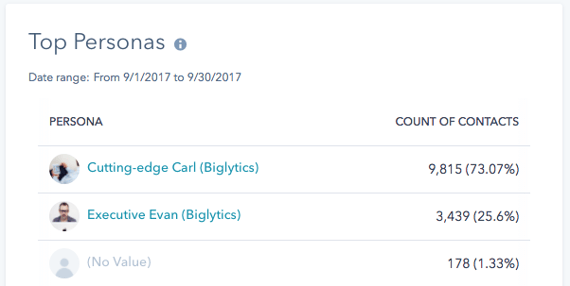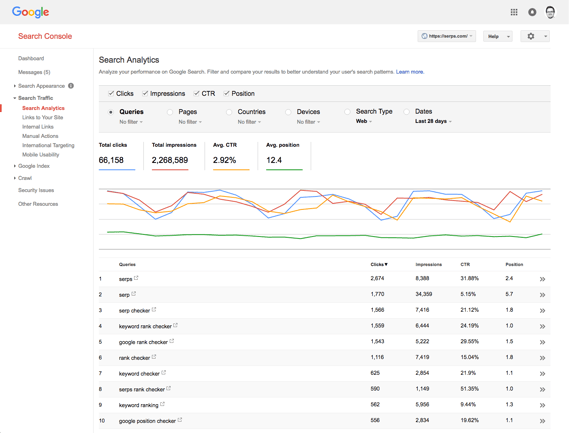The way we search, and how search engines serve results has evolved. In the past, we could choose a keyword and sprinkle it throughout the blog post like toppings on ice cream -- the more you had, the better.

Today, Google has evolved and looks beyond just the words you use on the page as ranking factors. To highlight this, in 2016 Google CEO Sundar Pichai said the following.
The last 10 years have been about building a world that is mobile-first, turning our phones into remote controls for our lives. But in the next 10 years, we will shift to a world that is AI-first.
With that in mind, Google now looks at links, the topic of your page, and the intent of the searcher to determine the results that are served. That said, keywords still play an important part in your SEO in 2018, but should be approached slightly differently than the way we all previously used keywords.
So here are 6 ways to do comprehensive keyword research to help ensure that you have a content strategy designed to succeed in 2018 (and beyond).
1. Create buyer personas
Your research should always begin with your buyer personas. Your personas represent the searchers who will become your visitors, leads, and ultimately, customers and promoters. You need to determine who they are. You need to imagine their goals. You need to consider what problems they face.
You need to understand what they’re searching for, and become that something.
So put yourself in their shoes and make a list of topics, phrases, and individual keywords that persona would search for. Draw inspiration from challenges or pain points. For example: if their goal is to plan a family vacation, then "family vacation", "plan family vacation", and "best family vacation spots" could all be on your list.
You can create profiles for your buyer personas in HubSpot right on your dashboard under the "Top Personas" dashboard widget.

While you’re brainstorming, make sure to try and mimic the language that your buyer personas would actually use in their searches. Keep in mind that language may vary in different parts of the world. What is "soda" in one part of the world might be "pop" or "cola" in another part of the world. Because personas are rooted in your target buyers, make sure to ask them what they learned from Google (or another search engine) recently, and identify some ways they are searching that can be helpful to you.
2. Research top blogs in your industry
You may already know about some of the top blogs in your industry, but a quick Google search, or browsing through a driectory like AllTop can be helpful.
For example, if you are starting a Cryptocurrency business it's easy to see a list of top blogs, and people to follow on Twitter for this topic.

Based on this list you can see what others in your industry, and potential competitors are writing about, and thus the terms they are using. This should give you a good head-start on what topics are important and quickly start a sample list of topics, and keywords, to go after.
Once you have a few topics, or keywords you can also search popular discussion sites like Quora, Reddit, or others depending on your industry and persona. Look for questions that have a lot of views, but not great answers, or any open questions that you believe are very relevant. This can essentially provide an early "roadmap" for the content you need to create, and questions to answer within that content.
3. Use a keyword suggestions tool
Running out of ideas? Use a tool to get auto-generated suggestions and expand your list of topics and keywords further. When you put one term into these tools, they'll show you related phrases and synonyms that you can add to your keyword list.
If you’re a HubSpot customer, navigate to HubSpot Content Strategy and click on the Create Topic Cluster button. Once you start typing a topic in the main box Content Strategy will automatically suggest related terms and topics based on existing content on your site, and the topics are are going after.

Want more suggestions? Other good tools to use are keywordstool.io, LSI Graph, or Answer The Public. In particular, LSI Graph and Answer the Public do a good job showing related terms that all fall under the same topic.
4. Determine which keywords people are using to find you
After Google started encrypting search results in 2013 we lost the ability to see exactly which keywords were driving visits to our site, but there are still other ways to get some of this insight to help plan the content you create.
If you have an existing website and are recieving some traffic, nagivate to Google Search Console and within the Search Analytics section you will see specific queries that people are using to find your site, and how many clicks each is recieving.

Image source: SERPs.com
The other way, if you already have some topic clusters setup within HubSpot Content Strategy is to look at the Traffic Analytics report, and see how many new visitors, leads, and customers are being generated from your content. Then you can click into any open subtopics and get suggestions for additional content to create.

5. Talk to your sales, support, and/or services team
While research tools are helpful, nothing can replace or substitute for direct feedback from your customers.
Ask your team what questions they are consistently getting from prospects or customers, and what resources they are sending. It's likely that this alone can help you find overall topics and terms that you should consider creating content around.
6. Do some analysis
Last of all, decide which keywords you have the best opportunity to rank for. Your Domain Authority (DA) is the best-shot you have to rank for competitive terms, and the closer to 100 you are the more likely your chance.
That's not to say if your Domain Authority is lower that you shouldn't try, but build up authority within one topic before you try to to overtake a goliath that is dominating the top of search results. This can be done with lots of blog posts that address various keywords within a topic and then linking each blog post back to a pillar page.
Do you use other methods to find the right keywords for your business? Share your insights in the comments below.
